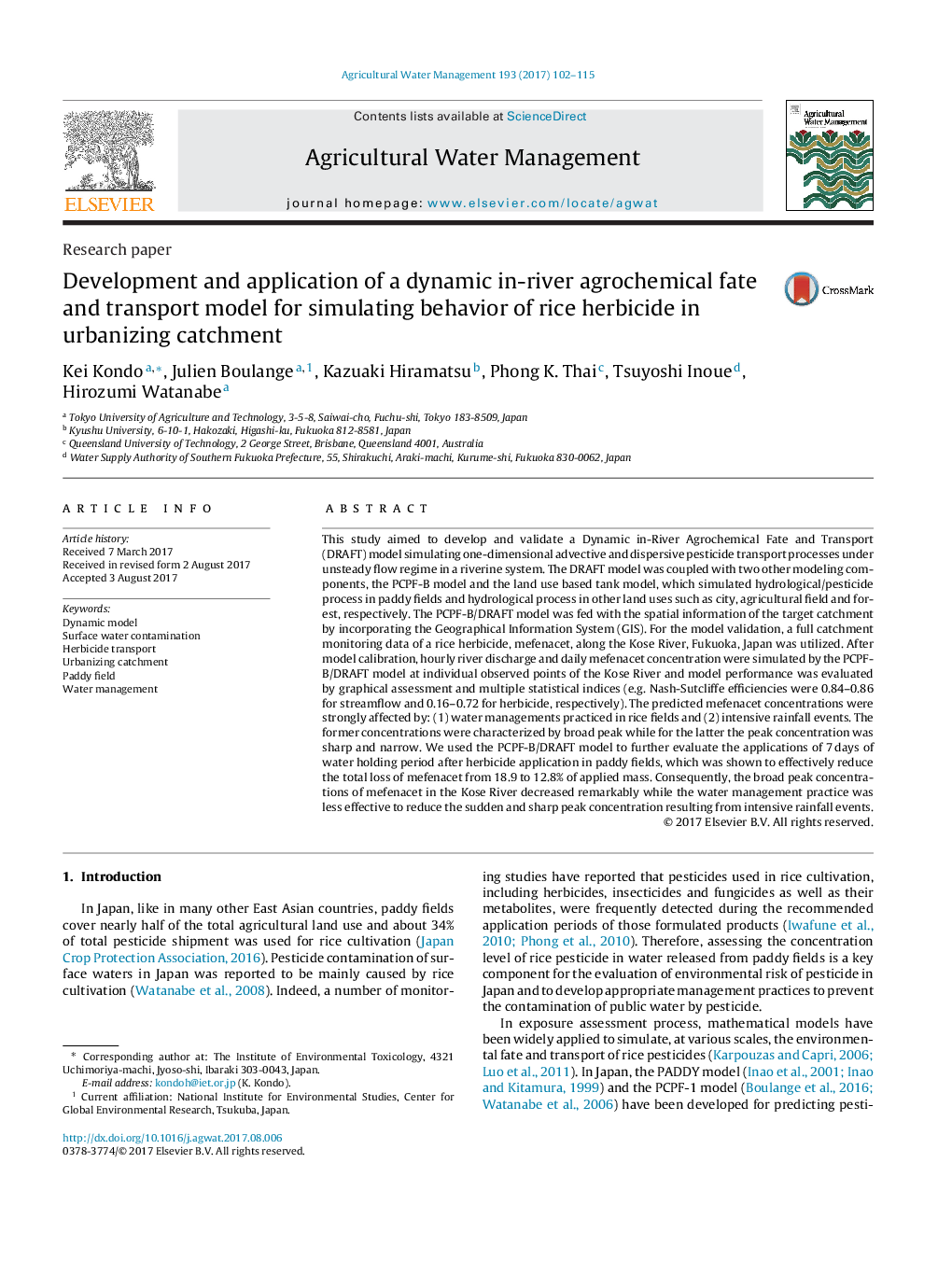| کد مقاله | کد نشریه | سال انتشار | مقاله انگلیسی | نسخه تمام متن |
|---|---|---|---|---|
| 5758263 | 1622887 | 2017 | 14 صفحه PDF | دانلود رایگان |
عنوان انگلیسی مقاله ISI
Development and application of a dynamic in-river agrochemical fate and transport model for simulating behavior of rice herbicide in urbanizing catchment
ترجمه فارسی عنوان
توسعه و کاربرد یک مدل سرنوشت و مدل حمل و نقل آکواریوم های پویا در رودخانه برای شبیه سازی رفتار علف کش های برنج در حوضه های شهر سازی
دانلود مقاله + سفارش ترجمه
دانلود مقاله ISI انگلیسی
رایگان برای ایرانیان
کلمات کلیدی
مدل پویا آلودگی سطحی آب، حمل و نقل علف کش، آبریز شهری، مزرعه شالیکاری، مدیریت آب،
موضوعات مرتبط
علوم زیستی و بیوفناوری
علوم کشاورزی و بیولوژیک
علوم زراعت و اصلاح نباتات
چکیده انگلیسی
This study aimed to develop and validate a Dynamic in-River Agrochemical Fate and Transport (DRAFT) model simulating one-dimensional advective and dispersive pesticide transport processes under unsteady flow regime in a riverine system. The DRAFT model was coupled with two other modeling components, the PCPF-B model and the land use based tank model, which simulated hydrological/pesticide process in paddy fields and hydrological process in other land uses such as city, agricultural field and forest, respectively. The PCPF-B/DRAFT model was fed with the spatial information of the target catchment by incorporating the Geographical Information System (GIS). For the model validation, a full catchment monitoring data of a rice herbicide, mefenacet, along the Kose River, Fukuoka, Japan was utilized. After model calibration, hourly river discharge and daily mefenacet concentration were simulated by the PCPF-B/DRAFT model at individual observed points of the Kose River and model performance was evaluated by graphical assessment and multiple statistical indices (e.g. Nash-Sutcliffe efficiencies were 0.84-0.86 for streamflow and 0.16-0.72 for herbicide, respectively). The predicted mefenacet concentrations were strongly affected by: (1) water managements practiced in rice fields and (2) intensive rainfall events. The former concentrations were characterized by broad peak while for the latter the peak concentration was sharp and narrow. We used the PCPF-B/DRAFT model to further evaluate the applications of 7Â days of water holding period after herbicide application in paddy fields, which was shown to effectively reduce the total loss of mefenacet from 18.9 to 12.8% of applied mass. Consequently, the broad peak concentrations of mefenacet in the Kose River decreased remarkably while the water management practice was less effective to reduce the sudden and sharp peak concentration resulting from intensive rainfall events.
ناشر
Database: Elsevier - ScienceDirect (ساینس دایرکت)
Journal: Agricultural Water Management - Volume 193, November 2017, Pages 102-115
Journal: Agricultural Water Management - Volume 193, November 2017, Pages 102-115
نویسندگان
Kei Kondo, Julien Boulange, Kazuaki Hiramatsu, Phong K. Thai, Tsuyoshi Inoue, Hirozumi Watanabe,
